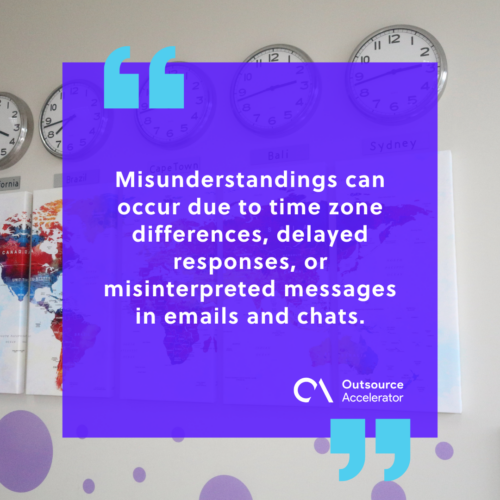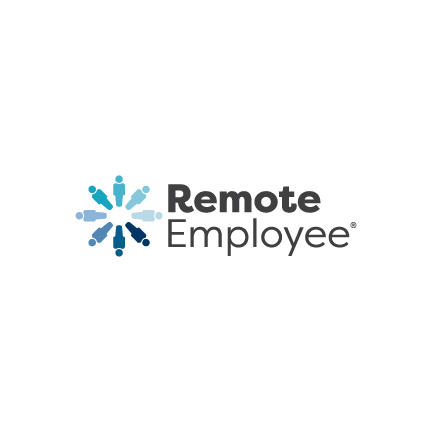Managing a remote employee: A quick guide

4 Secrets to managing a remote employee
Managing remote employees has become critical in today’s increasingly distributed workforce.
A Buffer study published in 2023 revealed that 71% of employees prefer a “fully remote work structure,” while 20% said that they prefer an arrangement that is “still hybrid but remote-first.”
While remote work offers flexibility and access to a global talent pool, it also presents unique challenges impacting communication, collaboration, and overall team performance.
Successfully navigating these obstacles ensures productivity, fosters trust, and maintains a cohesive team dynamic. Understanding the key challenges of managing remote employees is the first step toward creating a thriving and engaged remote workforce.
Key challenges of managing remote employees
Remember these key challenges when you manage a remote employee:
Communication gaps
Communication in remote settings lacks the immediacy and nuance of face-to-face interactions.
Misunderstandings can occur due to time zone differences, delayed responses, or misinterpreted messages in emails and chats.
Without effective communication and proper management, tasks can be delayed and team morale may suffer.

Building trust and accountability
Trust is harder to establish when you don’t interact with employees in person. Managers may worry about employees’ productivity, while remote workers might feel micromanaged.
Striking a balance between trust and accountability is crucial to maintaining a positive working relationship.
Maintaining team cohesion
Remote teams can easily fall into silos, where employees feel isolated or disconnected from their colleagues.
Building camaraderie and fostering a sense of belonging is more difficult without shared physical spaces or casual office interactions.
Ensuring productivity and engagement
Remote employees often face distractions at home, such as family responsibilities or inadequate workspace setups. Additionally, staying motivated and engaged can be challenging without the structure of an office environment.
Monitoring productivity without being invasive is a fine line managers must navigate.
Addressing these challenges requires a proactive approach, leveraging tools, clear communication, and fostering a supportive environment to ensure remote teams thrive.
4 secrets to managing a remote employee
Managing remote employees requires a thoughtful approach to foster productivity, engagement, and trust.
While remote work offers flexibility and access to a wider talent pool, it also introduces challenges that demand innovative solutions.
Here are the secrets to effectively managing a remote employee and ensuring a successful working relationship:
1. Build trust through accountability
Managing a remote employee often means allowing them to work independently due to factors like time zone differences or the nature of remote work itself.
This autonomy can encourage employees to develop resourcefulness and self-management skills.
However, it can also leave managers preoccupied with potential worst-case scenarios, often leading to micromanagement.
Micromanaging remote employees not only erodes trust but also stifles productivity. While the intent may stem from concerns about maintaining efficiency, the result is often the opposite: Disengaged employees and diminished performance.
To build a stronger, more productive relationship with your remote employees or team, focus on empowering them instead. Here’s how:
- Set clear and achievable goals to provide direction while giving employees the autonomy to determine how best to meet them.
- Leverage project management tools like Asana or Trello to monitor progress.
- Celebrate milestones and recognize contributions to show appreciation and boost morale.
By trusting remote employees to manage their tasks and time effectively, you foster a sense of ownership and accountability, which leads to a more motivated and engaged team.
2. Foster open communication through the right technology
Seamless and open communication is the cornerstone of effective remote team management. In today’s era of apps and smartphones, leveraging the right tools can significantly enhance both communication and productivity.
Investing in these technologies is no longer a luxury but a necessity when managing a remote employee.
To further strengthen communication and ensure smooth management of remote employees, consider incorporating these steps into your approach:
- Schedule regular video calls to discuss progress, address concerns, and maintain personal connections.
- Encourage open dialogue by inviting employees to ask questions and share feedback.
- Use performance tracking software to monitor results effectively, ensuring accountability without micromanaging.
3. Cultivate a sense of belonging
Remote work can sometimes feel isolating. A 2024 study by business communication company Ringover revealed that 24% of remote employees “are by far the most often lonely at work,” – an alarming rate especially when compared to office workers (12.1%) and hybrid workers (8.6%).
To combat this feeling of isolation and loneliness in your remote team, focus on creating a positive remote work culture:
- Host virtual team-building activities like online games or trivia sessions.
- Celebrate birthdays, work anniversaries, or personal achievements.
- Involve remote employees in decision-making processes to reinforce their importance to the team.
In a LinkedIn post, Remote Employee Co-Founder and CEO Ruffy Galang talked about building a strong company culture through fostering team spirit.
He said, “By organizing dynamic virtual team-building activities and commemorating important milestones together, you can foster a collective sense of belonging and camaraderie among your remote team members, regardless of their physical distance.”

4. Provide growth opportunities
It’s safe to say that most employees, whether remote or on-site, want more than just a job—they want a career with growth potential.
Remote employees, in particular, excel when they see a clear path for career advancement and professional development.
Show your commitment to their growth by:
- Offering access to online courses and certifications to help them stay competitive.
- Encouraging participation in webinars and industry events to expand their knowledge and network.
- Providing regular feedback on performance to highlight strengths and identify areas for improvement.
By investing in your remote employees’ development, you demonstrate that you value their contributions and are committed to their future. This not only boosts morale but also fosters loyalty and long-term engagement.
Managing a remote employee
Managing a remote employee doesn’t have to be overwhelming when you have the right strategies and support in place.
By addressing challenges like communication gaps, trust-building, and team cohesion, and by leveraging proven management practices, you can create a productive and motivated remote workforce.
Did you know? Remote Employee makes managing remote teams seamless and stress-free!
With over 60 years of combined experience in outsourcing and business, this Philippines-based BPO firm specializes in connecting you with top-tier professionals who are rigorously vetted and highly motivated.
Whether you’re looking to hire skilled remote talent or streamline your team management processes, Remote Employee offers tailored solutions to meet your needs.
Let Remote Employee help you unlock the full potential of your remote workforce. Ready to get started Visit their website today.







 Independent
Independent




